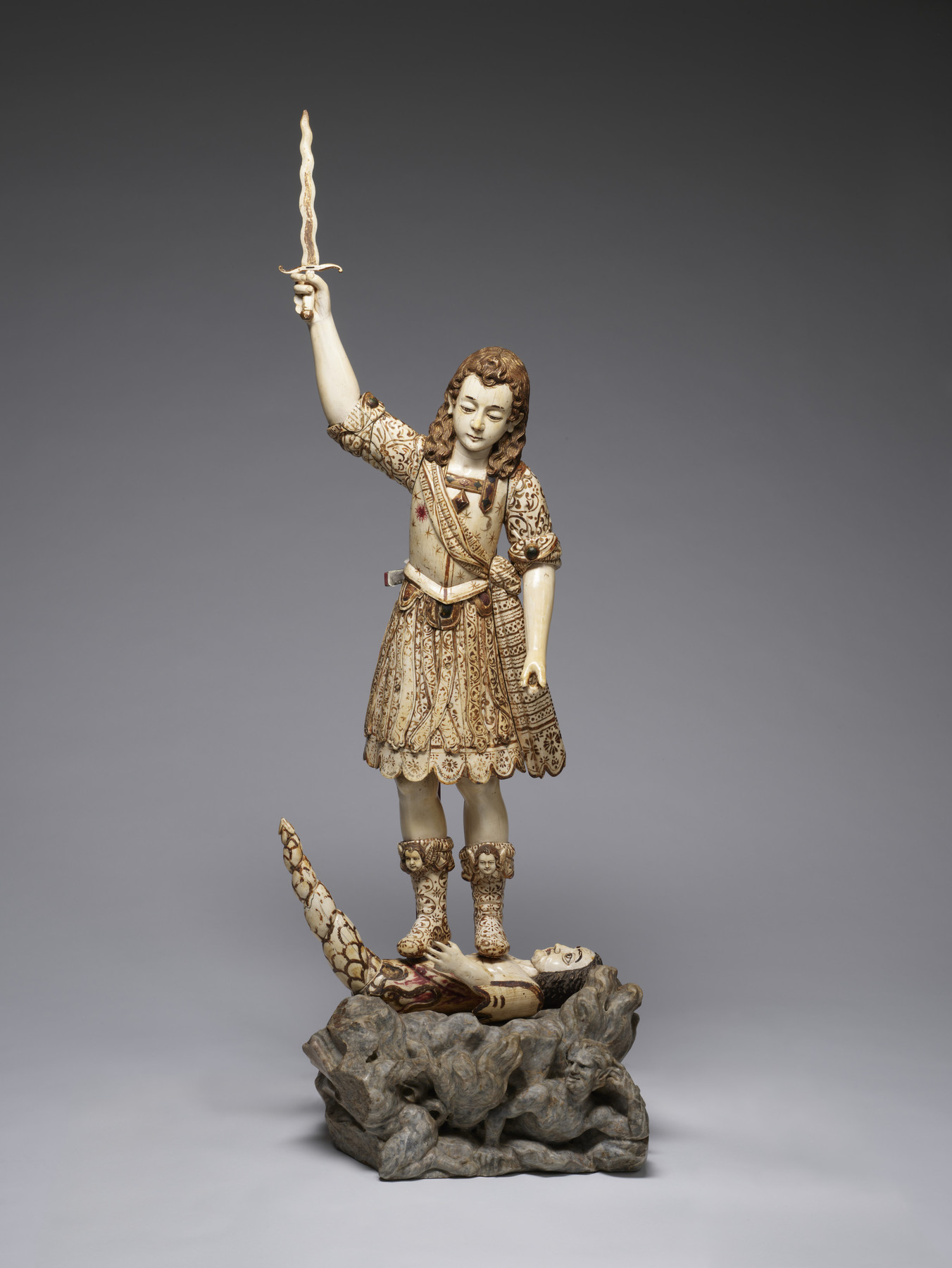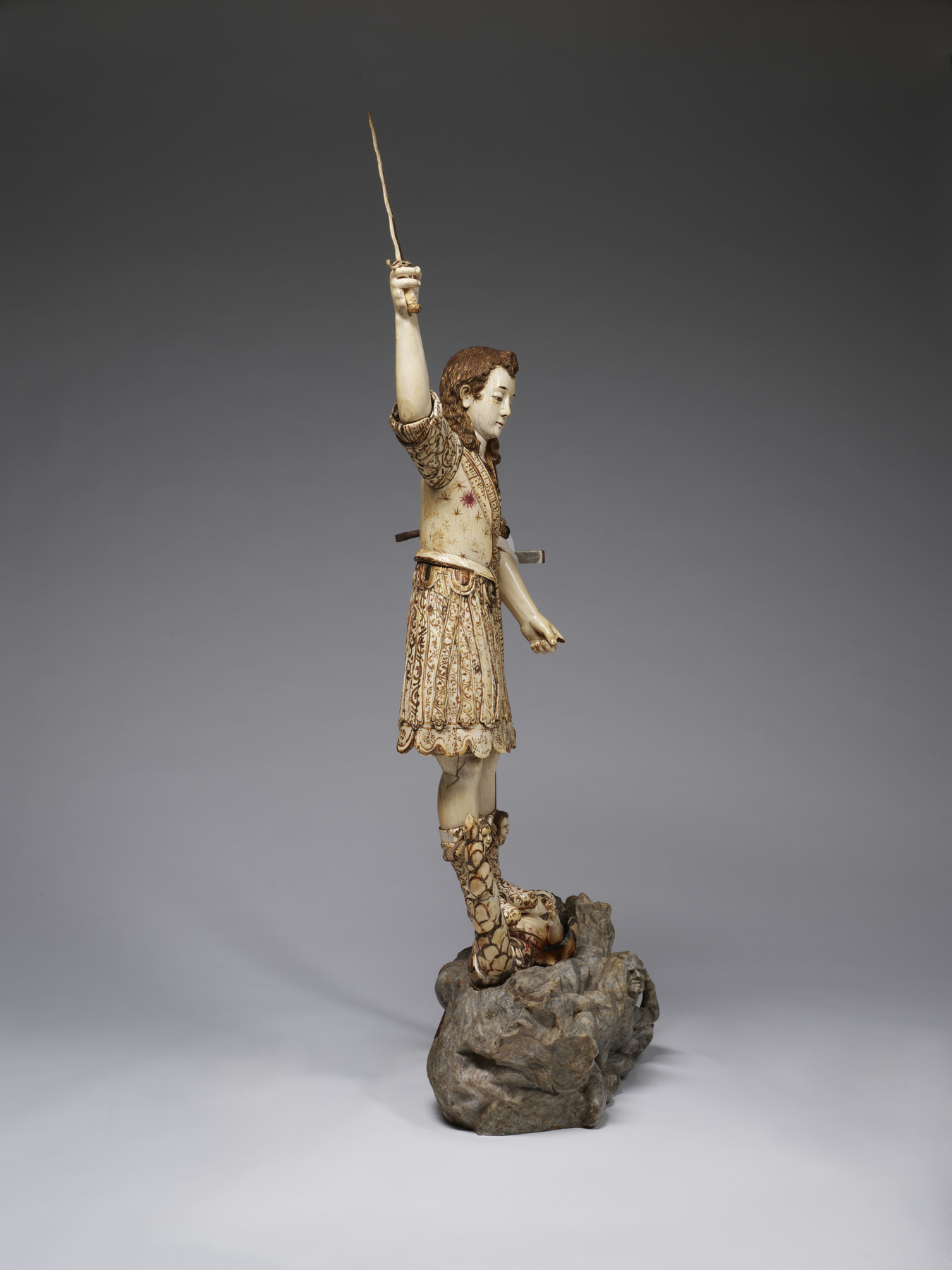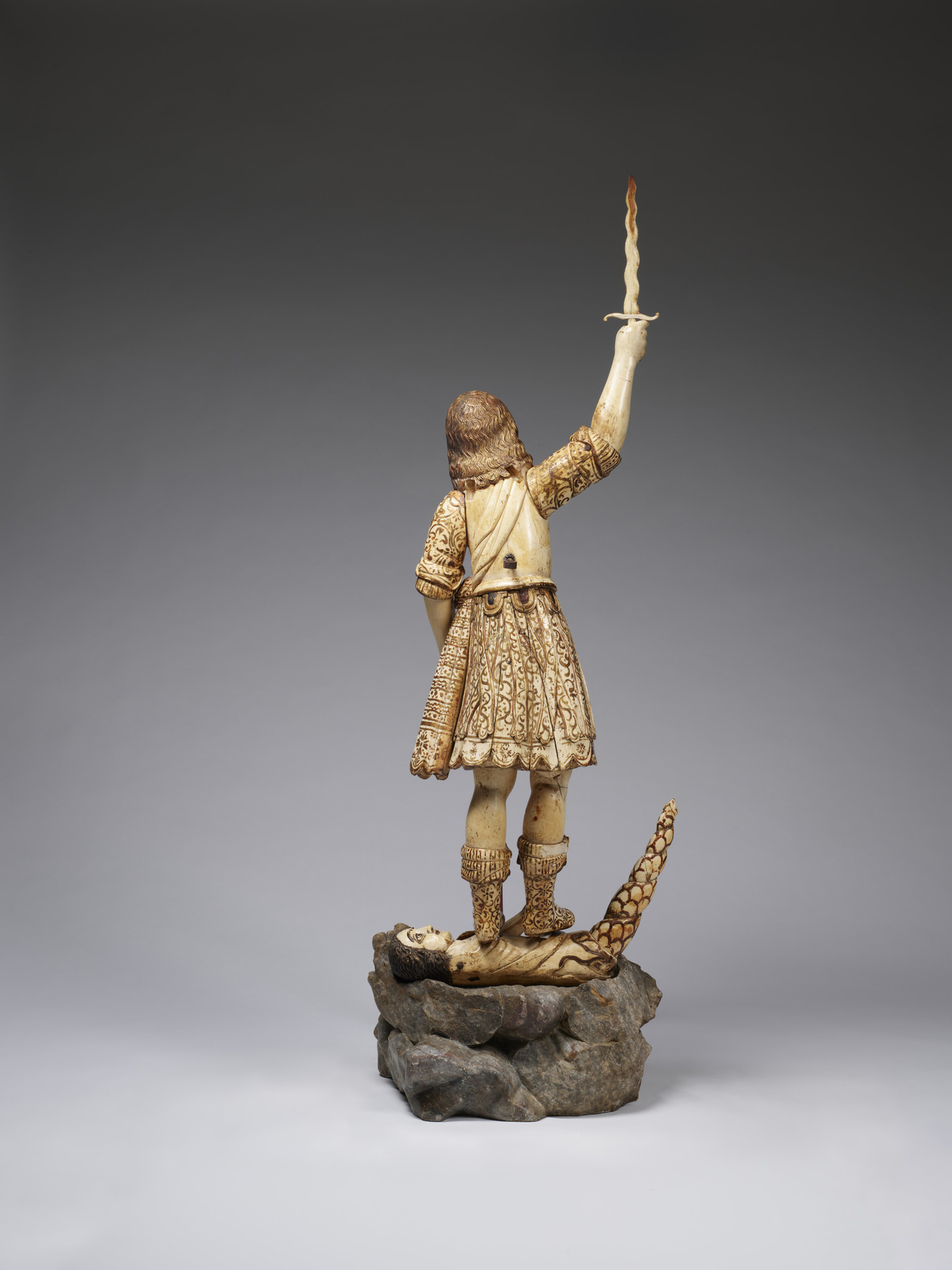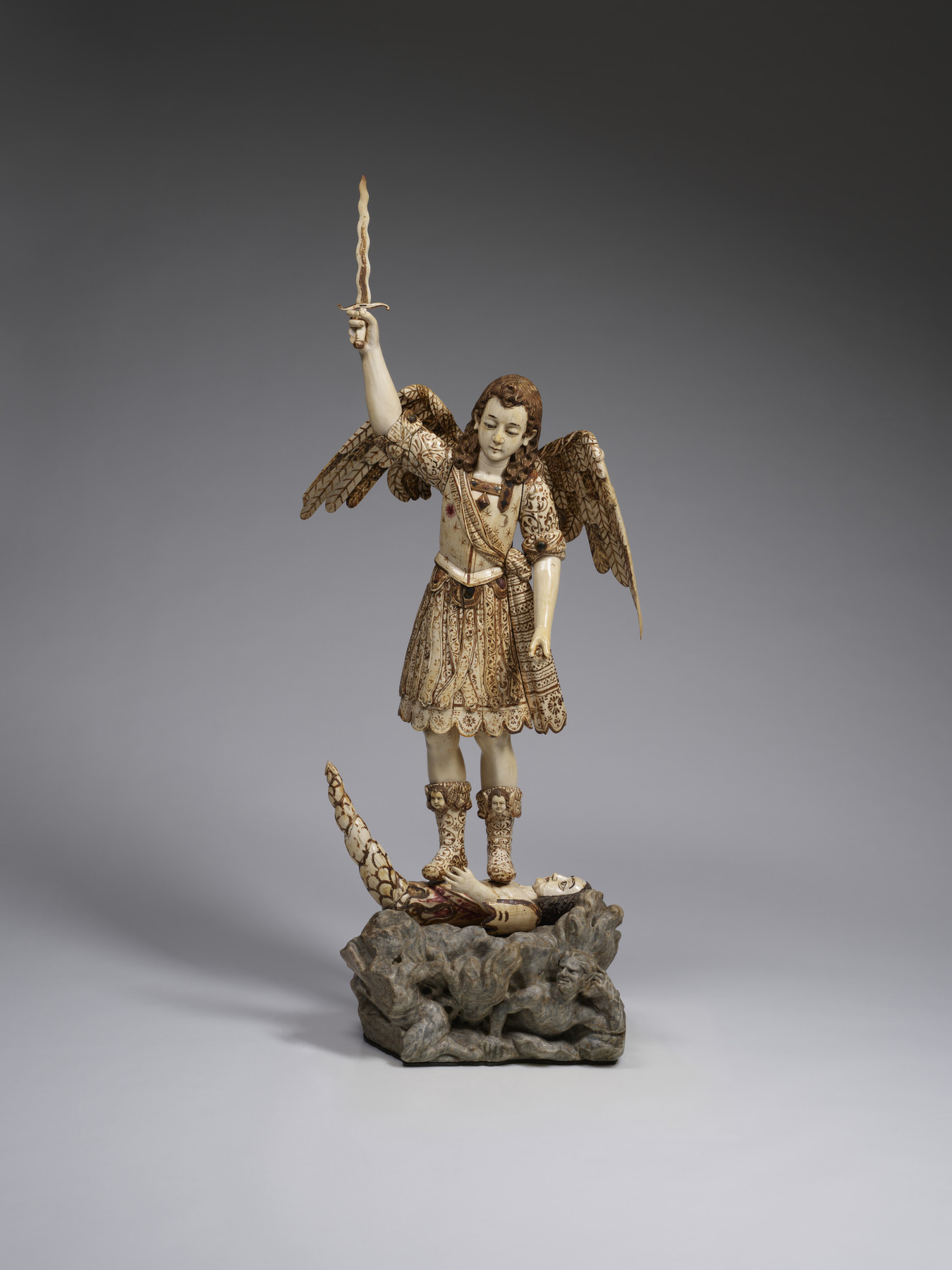The Archangel Michael
(Baroque Europe )
The Archangel Michael at the Day of Judgment stands on a prostrate demon and holds a flaming sword raised in his right hand. He is represented winged, wearing a tunic with short sleeves, a breastplate, a scarf draped over his shoulder and gathered on his hip, a "lorica," and buskins adorned with winged cherub heads. The demon has wings and a serpentine tail; its head, arms, and torso are human. It grimaces in pain, exposing its teeth. A number of pieces of ivory have been employed in creating this statue.
Inscription
Provenance
Provenance (from the French provenir, 'to come from/forth') is the chronology of the ownership, custody, or location of a historical object. Learn more about provenance at the Walters.
F. Ongania, Venice [date and mode of acquisition unknown]; Henry Walters, Baltimore [date of acquisition unknown], by purchase; Walters Art Museum, 1931, by bequest.
Exhibitions
| 1983-1984 | Ivory: The Sumptuous Art. The Walters Art Gallery, Baltimore. |
Conservation
| Date | Description | Narrative |
|---|---|---|
| 7/19/1982 | Treatment | cleaned |
Geographies
Philippines (Place of Origin)
Measurements
Overall, H: 55 1/4 × W: 25 × D: 13 in. (140.3 × 63.5 × 33 cm)
Credit Line
Acquired by Henry Walters
Accession Number
In libraries, galleries, museums, and archives, an accession number is a unique identifier assigned to each object in the collection.
In libraries, galleries, museums, and archives, an accession number is a unique identifier assigned to each object in the collection.
71.490












